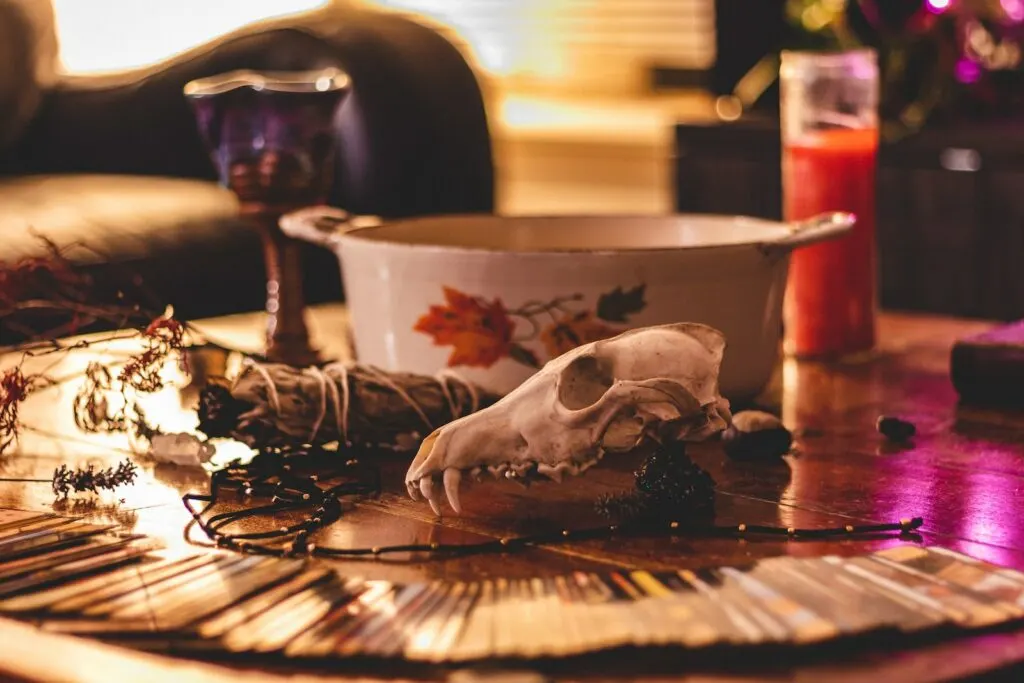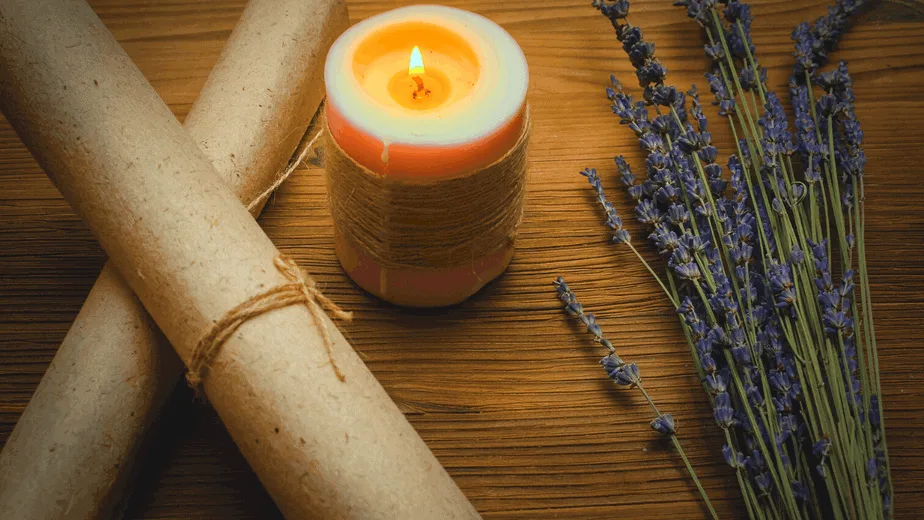Please note that posts on this site may contain affiliate links
In the world of witchcraft and magick, there are many tools that are used in ritual and spellwork. Two of the most commonly used tools are the athame and the wand. Both of these tools have their own unique correspondences and uses, and it is important for practitioners to understand the differences between them in order to enhance the effectiveness of their practice.
Magical tools are an integral part of the neopagan religion of Wicca. These tools are used in ritual practice and each has its own unique purpose and symbolism. The Magician from the Waite–Smith tarot is often depicted using these same tools, which have been used by Wiccans for centuries.
In traditional Gardnerian magic, covens were groups composed of initiated members who conducted rituals involving magical tools and secret books (Book of Shadows). These tools were considered sacred and were kept within a specific coven.
They included items such as wands, athames, chalices, cauldrons, pentacles, candles, incense burners, and other objects that could be used to focus energy during rituals. Each tool had its own special meaning and was believed to help facilitate communication with the divine.
In your own magical practice, it is important to understand the correspondences of your ritual tools and how they can be used in different ways. In this post, I will discuss the differences between the athame and magic wands and how they can be used in different ways.
The Athame
An athame is a ritual knife that is used in Wiccan practice and other forms of ceremonial magic. The athame is typically used for directing energy, and it is associated with the element of fire. It is also associated with the planet Mars and the zodiac sign Aries.
The history of the athame can be traced back to the medieval period, where it was used as a tool for hunting and warfare. In witchcraft and magick, the athame is often used to cast circles, to invoke the elements, and to perform other ritual actions.
The athame is typically a double-edged knife, and it is usually made from metal. It is often decorated with symbols and runes that have special meaning to the practitioner. The handle of the athame is often made from wood, bone, or other natural materials.
In ritual and spellwork, the athame is used to direct magical power and psychic energies, to cut through negative energies, and to protect the practitioner from evil spirits. It is also used to invoke the elements and to call upon the aid of the deities.

About The Athame
The athame is a ceremonial blade with a black handle, and is the main ritual implement used in many magical traditions. It was first introduced by the Hermetic Order of the Golden Dawn in the early 20th century for use in banishing rituals, and later adopted by Wiccans, Thelemites and Satanists. It is one of four elemental tools used in modern occultism, traditionally representing fire for witches and air for ceremonial magicians.
Gerald Gardner’s writings from the 1950s suggest that he may have been initiated into a surviving tradition of Witchcraft, which included the use of an athame as their most important ritual tool. This tool was not to be used for physical cutting, but had many other uses. Speculation suggests that Gardner’s interest in antique swords and knives may have contributed to its central importance in modern Wicca.
While the athame can be used for many things, there are certain uses that should be avoided.
First, the athame should not be used for mundane tasks such as cutting food or carving candles. Instead, use your boline for these activities. Additionally, once you have consecrated your athame it should not be shared with others; it is meant to be a personal tool and its power should remain within you. Finally, never use the athame to harvest herbs or flowers; this could damage them and disrupt their natural energies.
The Wand
A wand is a ceremonial tool that is used in witchcraft and magick for directing energy. The wand is associated with the element of air, and it is also associated with the planet Mercury and the zodiac sign Gemini.
The history of the wand can be traced back to ancient times, where it was used as a tool for divination and healing. In witchcraft and magick, the wand is often used to cast circles, to invoke the elements, and to perform other ritual actions.
Wands are typically made from wood, and they are often decorated with symbols and runes that have special meaning to the practitioner. The wand may also have a crystal or other natural material at the tip, which is used to focus energy.
In ritual and spellwork, the wand is used to direct energy, to banish negative energies, and to protect the practitioner from evil spirits. It is also used to invoke the elements and to call upon the aid of the deities.
About The Wand
The use of wands in mystical and religious practices has a long history. In the 13th century, Latin grimoires introduced the wand as a tool for magical rituals. This idea was further developed by Eliphas Levi, a mid-19th century occultist author, who wrote about using a wand along with other ritual objects such as a dagger, sword, hexagrammic pentacle, and cup. Levi also wrote an excerpt from a Hebrew version of Philosophie Occulte which further popularized these tools in occult circles.
Today, wands are used in The Hermetic Order of the Golden Dawn, Thelema, and Wicca by independent practitioners of magic. They are seen as powerful tools to channel energy and focus intent during rituals. Wands can be made out of many materials such as wood or metal and often have symbols carved into them to represent different aspects of magical practice. By utilizing wands in their rituals, practitioners can access higher levels of spiritual power and insight.
Magic wands have been used for centuries in many different cultures and traditions. They are believed to be powerful transmitters of energy, capable of performing a variety of tasks. In Zoroastrianism, early Hinduism, Ancient Greeks and Romans, and other ancient cultures, magic wands were used for rituals and ceremonies.
Today, many people use magic wands for a variety of purposes. Some use them to perform spells or cast charms while others use them as tools for meditation or healing. Wands can also be used to focus energy on an object or person in order to manifest desired results. It is important to remember that the power of the wand lies within the user; it is up to the individual to decide how they will use their wand and what kind of energy they will channel through it.

Differences in Correspondence
The main difference between the athame and the wand is their associated elements. The athame is associated with the element of fire, while the wand is associated with the element of air. This means that the athame is more suited for rituals and spellwork that involve the element of fire, such as protection, purification, and banishing. The wand, on the other hand, is more suited for rituals and spellwork that involve the element of air, such as communication, divination, and healing.
In addition to their associated elements, the athame and the wand also have different associated planets and zodiac signs. The athame is associated with the planet Mars and the zodiac sign Aries, while the wand is associated with the planet Mercury and the zodiac sign Gemini.
This means that the athame is more suited for rituals and spellwork that involve Mars energy, such as strength, courage, and action. The wand, on the other hand, is more suited for rituals and spellwork that involve Mercury energy, such as communication, intelligence, and travel.
Choosing the Right Tool
When choosing between an athame and a wand, it is important to consider the correspondences and uses of each tool. The athame is often associated with the element of fire and is used for directing energy, making decisions, and cutting through negativity. The wand, on the other hand, is often associated with the element of air and is used for channeling energy, manifesting intentions, and creating positive change.
It is important to consider the planetary and zodiac correspondences of the various tools in witchcraft. The athame is typically associated with Mars and Aries, as it represents energy of action and leadership. The wand is usually linked to Mercury and Gemini, symbolizing energy of communication and adaptability.
These correspondences can help practitioners align their spells with particular energies for a greater chance of success. It is also wise to take some time to research these planetary and zodiac symbols so that you can more accurately use them when performing rituals or casting spells.
When it comes to usage in ritual and spellwork, the athame is often used for protection and banishing negative energies. It can also be used for drawing circles and casting spells. The wand, on the other hand, is often used for raising energy and manifesting intentions. It can also be used for healing and blessing.
One important consideration when choosing between an athame and a wand is the energy of the tool. The athame is often seen as having a more masculine energy, while the wand is seen as having more of a feminine energy. This is not to say that one tool is exclusively for men or women, but rather that the energy of the tool may align more with one’s personal energy.
Another factor to consider when choosing between an athame and a wand is the appearance of the tool. Some people may prefer a more traditional style athame or wand, while others may prefer a more unique or personalized appearance. The variety of wands and athames available on the market allows for many options to choose from.
In addition, It is also worth noting that it is possible to use both the athame and the wand in ritual and spellwork, as each tool can bring its own unique energy and correspondences to a ceremony.
In conclusion, when choosing between an athame and a wand, it is important to consider the correspondences and uses of each tool, as well as personal preference and individual practice. Understanding the correspondences of tools can greatly enhance the effectiveness of ritual and spellwork. It is also important to remember that both tools can be used in different rituals and spellwork, and that the most important thing is to find the tool that resonates with you the most.

